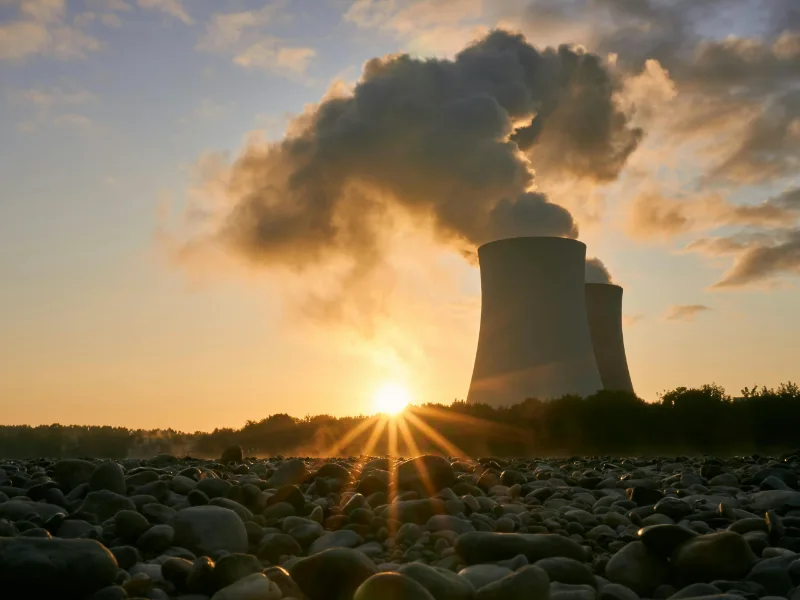- Nuclear power plants utilise nuclear fission to produce heat from uranium or plutonium atoms.This heat boils water into steam, driving turbines produce electricity without emitting greenhouse gases.
- While nuclear power plants offer clean energy benefits, managing nuclear materials and radioactive waste presents significant safety and environmental challenges.
Nuclear power plants are marvels of modern engineering, harnessing the immense power of nuclear fission to generate electricity. Unlike traditional fossil fuel-based plants, they rely on uranium or plutonium atoms to produce heat through controlled atomic splitting. This heat, in turn, transforms water into steam, propelling turbines that generate clean, efficient electricity without emitting greenhouse gases. Despite their benefits, managing nuclear materials and waste remains a critical challenge, requiring stringent safety measures and technological advancements.what do nuclear power plants generate.
Also read: Microsoft hires nuclear expert to fuel its data centres
Also read: US looks to nuclear to address AI data centre power shortage
What do nuclear power plants generate
Nuclear power plants generate electricity through a process called nuclear fission. It’s like this: inside the plant, they use uranium or plutonium atoms, which are really tiny particles. When these atoms split apart, they release a ton of heat energy. This heat is used to boil water and create steam, just like in a regular power plant. The steam then turns turbines, which generate electricity. It’s pretty cool because nuclear power plants produce a lot of electricity without releasing greenhouse gases like coal or oil plants do. They’re really efficient once they’re up and running, although handling nuclear materials safely and disposing of waste are big challenges they have to manage carefully.
How does it work
Imagine a nuclear power plant as a super high-tech steam machine. Instead of burning coal or gas to make steam, it uses something much more powerful: tiny atoms! Inside the reactor core of the plant, there are these special atoms—usually uranium or plutonium—just hanging out. But here’s the cool part: when we hit these atoms with a special kind of particle, like a neutron, they split apart in a process called nuclear fission.
Now, when these atoms split, they release a crazy amount of heat. It’s like popping popcorn in a microwave, but on a massive scale! This intense heat boils water that surrounds the reactor core, turning it into steam. Imagine steam billowing out, except instead of a kettle, it’s powering a massive turbine.
This turbine is connected to a generator, and as the steam rushes past, it spins the turbine super fast. The heat from splitting atoms turns into electricity that powers homes, schools, and everything that needs electricity.
Unlike traditional power plants that burn fossil fuels and release a lot of pollution, nuclear plants don’t emit greenhouse gases during their electricity-making process. They’re like the clean, green superheroes of the energy world. Of course, there are challenges, like safely managing nuclear materials and handling radioactive waste, but engineers and scientists work hard to make sure it’s done safely.
So, next time you flick on a light switch or charge your phone, you can thank the incredible process of nuclear power for keeping things running smoothly, efficiently, and without harming our planet.
Nuclear power plant accident
While nuclear power plants bring us a lot of convenience in life, their safety hazards have always existed. Several major nuclear leaks in the world have also made us re-examine the relevant issues of nuclear power plants.
1.Fukushima Daiichi nuclear power plant
A nuclear power plant located in Fukushima Prefecture, Japan, suffered a serious nuclear accident in 2011. The tsunami caused by the Great East Japan Earthquake caused serious damage to the facilities and released nuclear radiation.
This accident has had a far-reaching impact on global nuclear energy development and safety standards, prompting countries to re-examine and strengthen the safety design and emergency preparedness of nuclear power plants.
2.Chernobyl nuclear power plant
The Chernobyl Nuclear Power Plant in Ukraine experienced one of the most serious nuclear accidents in history in 1986, resulting in the release of large amounts of nuclear radiation into the environment.
This accident not only had a serious impact on human health and the environment, but also posed major challenges to nuclear energy safety technology and management policies, becoming an important milestone in the history of global nuclear energy development.

